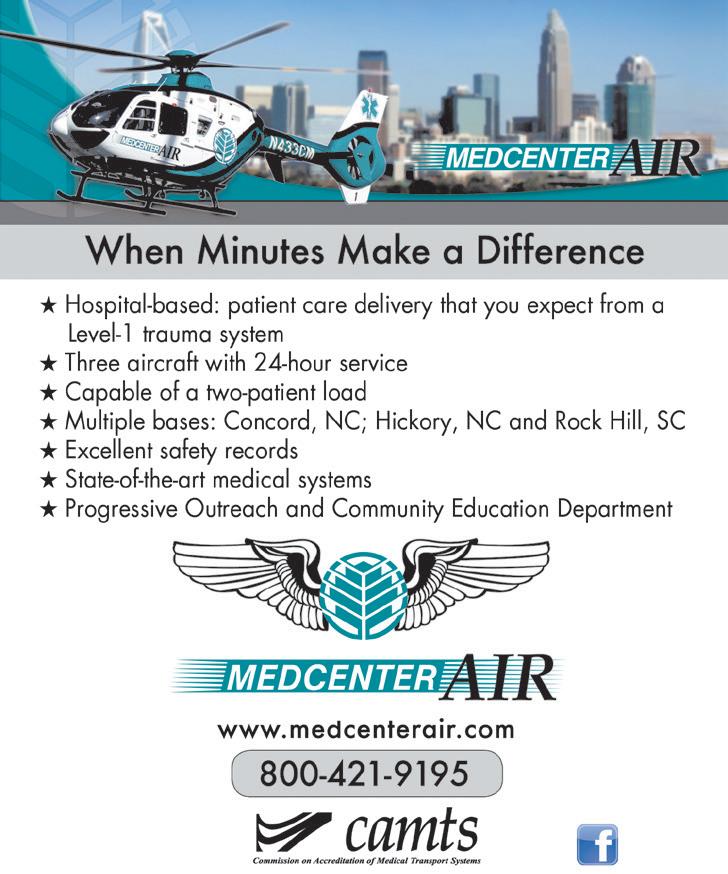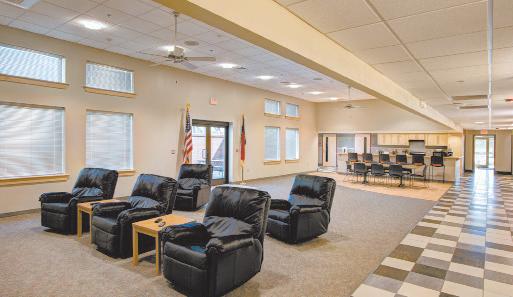
9 minute read
Pandemic Impacts on Station Design
Over the past five decades that our design firm has been
Ken Newell involved in the planning and design of public safety facilities, there have been relatively few “watershed” events or industry changes that have made permanent and significant changes to the design of rescue stations. The realization that training opportunities could easily be designed into stations made an impact to most facilities. The federal implementation of the ADA was a design process changer. Certainly, the increased participation of female firefighters has made permanent design modifications to most stations. Most recent, the recognition of the need to identify and control carcinogens in the station has resulted easier when needed. in a new approach to station design.
Advertisement
Considering the scope and size of the current pandemic, known as COVID19, it certainly feels like this may be one of those “design-changing” events that will result in a profound transformation in the way we live and the facilities we build. Over the next 18 months we will be seeing how design will evolve as a result. What will the world be like once the pandemic passes and the restrictions, along with social distancing have been lifted? Which changes will stay with us after the immediate threat has passed? It may take years before we are able to ascertain how the global pandemic has changed the planning and design of public buildings, including public safety stations.
While it is worth repeating that, at these early stages of this event, it is impossible to know what permanent changes will be made to facility design, let’s consider some of the potential design implications that may impact future station design.
Oversized, flexible spaces will make distance spreading and secondary uses
Since most predicted practices involve separating people, either in separate spaces or by social distancing, the overall size of stations are likely to increase. Regulatory minimums and station design best

Multi-person offices should be sized with proper distancing planned.

practices are normally used to size stations. Therefore, distancing and/ or separation would likely make the dimensions and associated footprints grow. This could result in the “square foot per person” to increase and the need to find larger lots for the planned station.
Interiors are largely shaped by minimum distances, such as the dimensions of corridors, dimensions between people in classrooms, gyms, dining areas, even between urinals. Most of these are significantly smaller than the recommended COVID19 “social distances.” The building codes may eventually change to increase the minimum square feet per person calculations in buildings or individual spaces. The resulting larger spaces will also likely be designed as flex space that can accommodate multi-use programs and temporary activities.
On the station site plan we may need to spread pedestrian activities more than we currently do. For instance, there may be the widening of sidewalks and pedestrian crossings on site to reduce the chance of passer-by interaction between staff and patrons. This could have greater impact on urban stations where the “onsite/ offsite” interaction is more pronounced. Selecting oversized sites not only provide opportunity for future station growth, but now can potentially serve to accommodate temporary flex spaces such as pop-up hospitals, clinics, blood/ plasma donation centers, etc.
Planning the site with more open green space will not only allow, but will encourage open air activities in proper climates. This will make for healthier staff and reduce the chances of disease transmission. To assist in reducing transmission from the public to your essential workers, consideration could be given to providing a more limited means of onsite communications with the public. For example, since many stations provide for a Watch Room with exterior views to the front of the facility, consider one of the proper methods of communicating with the public through the glass itself, thus limiting the need for bringing potentially sick persons into the building.
As your staff and visitors enter the station, there may be thermal detection cameras at all entries, or at prescribed points of entry in order to limit the chance of someone entering that may have early symptoms of a disease or virus. This activity could either increase the sizes of lobbies, or add a requirement for airlock vestibules that will control entry to the station if thermal detection is not satisfied.
Once inside the station, attention will be given to require as little surface touching by multiple persons as possible throughout the day. Efforts will only increase for occupancy or motion detection control of things like lights, doors, elevators, plumbing fixtures, etc. Many surfaces that must be touched can be specified to be antimicrobial. Doors and hardware that require actual handtouching will only decrease in count. Automatic sensors/openers, and simple devices such as foot push and pull pads will increase in use.
Secure lobbies sized appropriately will provide room for proper temperature and symptom testing when necessary.
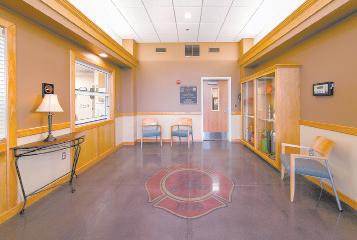
For the mechanical systems in the station, there will likely be increased guidelines for greater air flow. Viral particles are too small to be blocked by HEPA and MERV filtration. The science indicates that by maintaining a higher relative humidity, the moisture in the air can increase the size of the virus bearing droplet, thus allowing it to drop to a surface quicker where it can be disinfected. Also, by increasing the amount of outside air in the system, along with the rate of exchange, indoor virus particles can be diluted. The old-fashioned way of providing fresh outside air is still viable. It’s called an operable window! Most station occupants appreciate the opportunity of impacting their interior space by opening a window in desirable weather conditions. However, be aware that the use, or misuse, of operable windows can adversely impact the HVAC system and its ability to properly control inside temperature and humidity.
Besides the potential impacts to station spaces that have already been mentioned above, let’s consider a few other spaces that may require rethinking. Due to the “hot-zone,” or the spaces where we are trying to contain/ control carcinogens in the station, the apparatus bays and most of the support spaces, much effort is already being made to “quarantine” these functions in the station. However, the current crisis may lead to an increased requirement for sanitation/disinfection procedure for apparatus and equipment after each use or the end of each shift. The important decon rooms and spaces now become more critical since they are playing an ever-increasing role in controlling infectious disease.
For the interior station spaces that are normally considered public interfacing, there may be the most stringent of controls. Mentioned above is the possibility, or at least the temporary opportunity, to completely keep the public out of the station by providing a method of communicating with the station staff from outside, possibly through a watch room window device. If the visitor is allowed access to the interior, it becomes even more important than before to limit the “public zone.” That may mean an airlock or public lobby where temperature or symptoms can be checked prior to allowing entry.
If public access to the lobby is granted to all visitors, then a “speakthru” device may be used to a staffed room such as the receptionist or watch room. Also, if visitor access is allowed to the lobby, visitors should be limited or separated from each other by space, screens, or partitions. If visitors are granted access to station community meeting rooms or conference rooms, proper distancing should be accommodated, along with limited access to public toilet facilities. Every effort and architectural feature should be provided to keep station visitors out of the station “private zone.”
Most departments will want to monitor staff before allowing them access into the station. This may mean dedicating a single entry when they come on shift, which may mean designing a staff airlock large enough for checking staff entering.
Once “on shift,” care is to be taken to allow more distancing than previously provided. Watch rooms or report rooms, where there are work spaces for multiple persons, may need to have workspaces spread farther apart and/or separated with screening devices. Multi-person offices have long been used to conserve space needs.
see PANDEMIC IMPACTS page 28
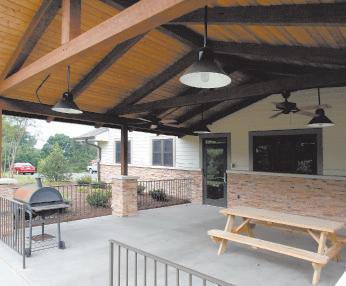
Larger patios and outdoor opportunities provide for fresh air exposure and easier distancing.
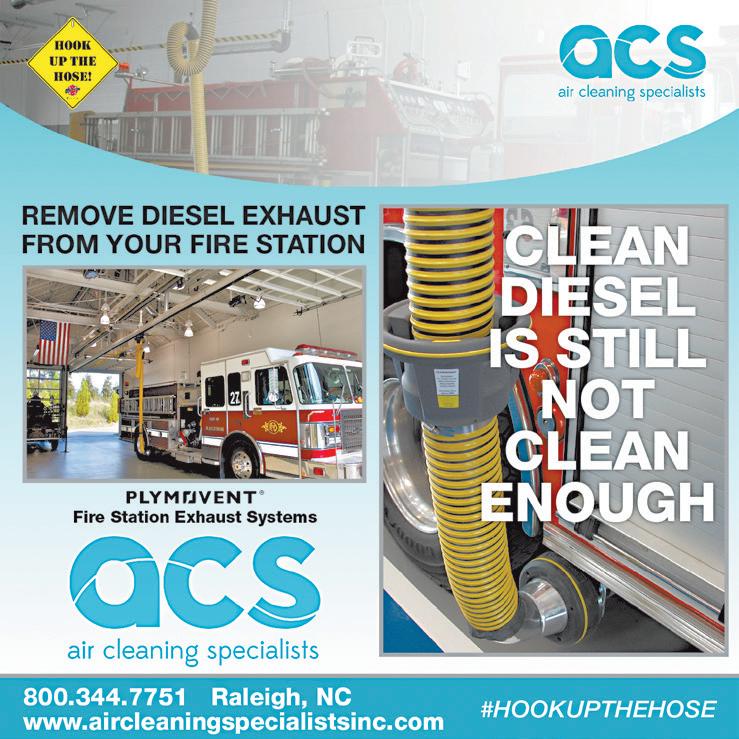

More departments may rethink this approach. Offices or workspaces that are used by each oncoming shift will need to be easily cleaned and sanitized at the end of each shift.
Other rooms where staff congregate, such as training rooms, dayrooms and kitchens, may have to increase in size to meet distancing recommendations. Group toilet and shower rooms may become a thing of the past to better control distancing to allow for a room lock-down until disinfecting can be performed. The growing trend and advancing technology seem to be leading to built-in equipment for UV technology that can clean most surfaces after each use. This would especially apply to toilet/shower rooms, locker rooms, etc.
Even before the pandemic, more than half of all new stations with sleeping accommodations were being designed with individual bunk rooms in order to address privacy and gender separation. The pandemic concerns will only increase this trend. Even more than just separate bunk rooms, we anticipate seeing more requests for cold-sheet bunking — dedicated bunking per shift.
Most station gyms or workout rooms tend to be over crowded with equipment, which increases the potential for too little distancing during occupancy. In the future, care will need to be taken for programming enough space in the gym and not allowing more equipment than programmed. The

Consider widening corridors and not overcrowding equipment in the physical training room for better distancing.
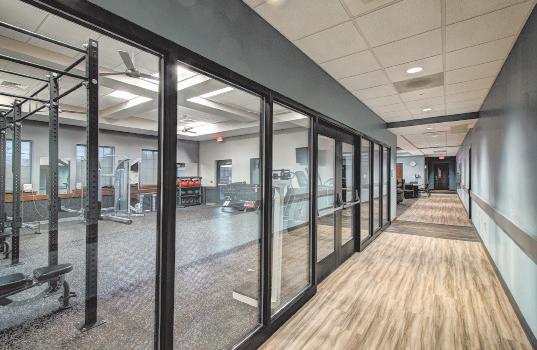
recent trend to provide direct outside access from the gym — think crossfit training — is advantageous to decrease room occupancy, bring fresh air into the gym, and provide safer outdoor environment for staff.
And speaking of outdoor space, providing a covered patio off of the kitchen or dayroom has become very beneficial over the past several years. The advantages of doing so now only increase as mentioned above. Consideration now must be given to increasing the size of the patio in order to allow for more people, spaced appropriately.
As we work to overcome this current crisis, we will also work to be better prepared should we face a similar event in the future. The ideas addressed in this conversation will only become better defined and will lead to better station design. If history is the best indicator of what to expect, COVID19 will likely result in changes to building codes, along with increase to station sizes, complexity and costs.
Ken Newell is a Principal and Partner with Stewart-Cooper-Newell Architects. Since 1988, he has been directly involved in over 300 of the firm’s 425+ Fire/EMS and Public Safety projects. Newell has earned a national reputation for the programming and design of public safety facilities that are functional, practical, and budget-conscious. He has also consulted other architects on the planning and design of over 125 public safety projects spanning 27 states. Because of his extensive experience in Public Safety design, he has been invited to speak at many state, regional, and national Public Safety conferences since 2000.
